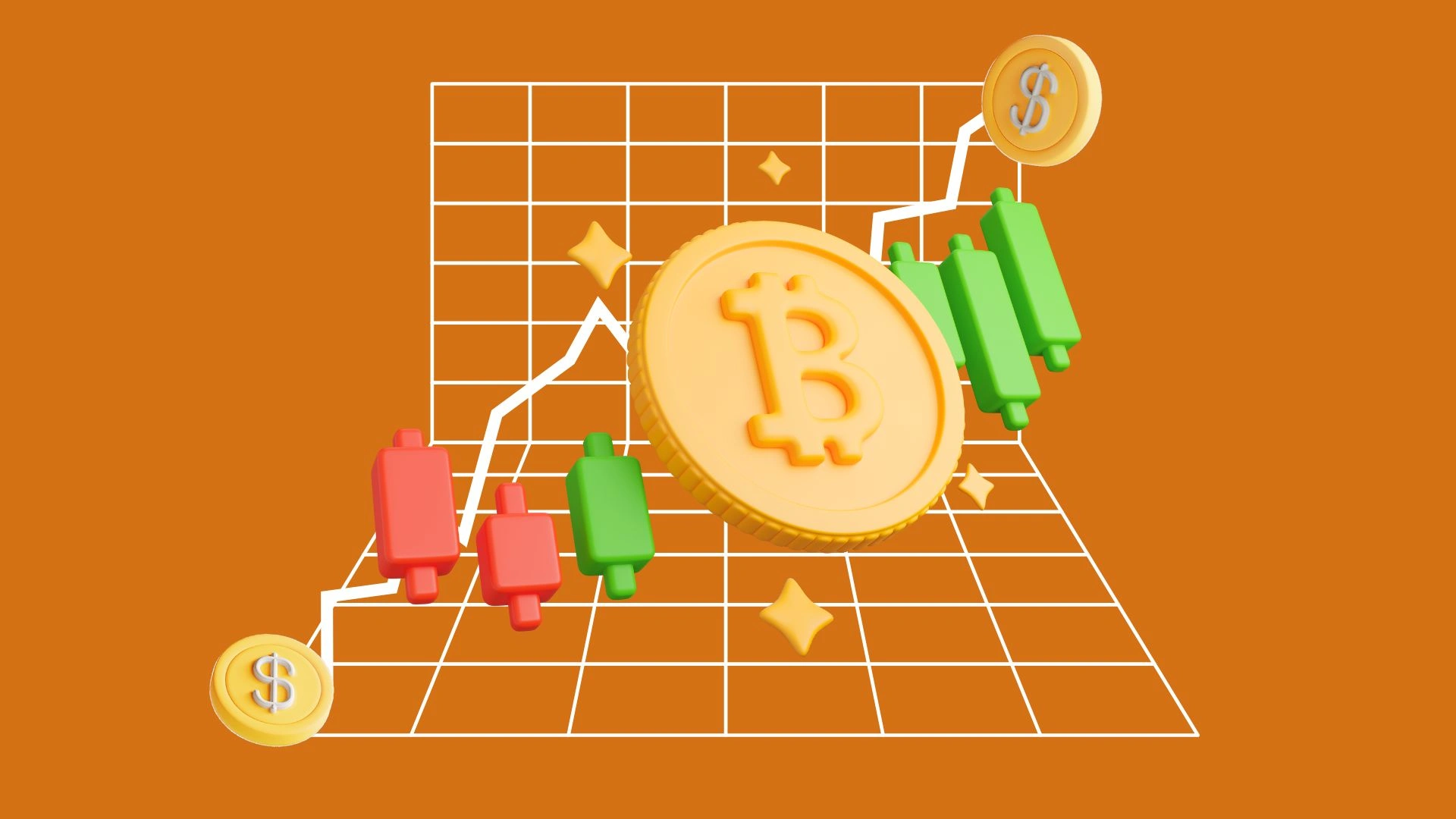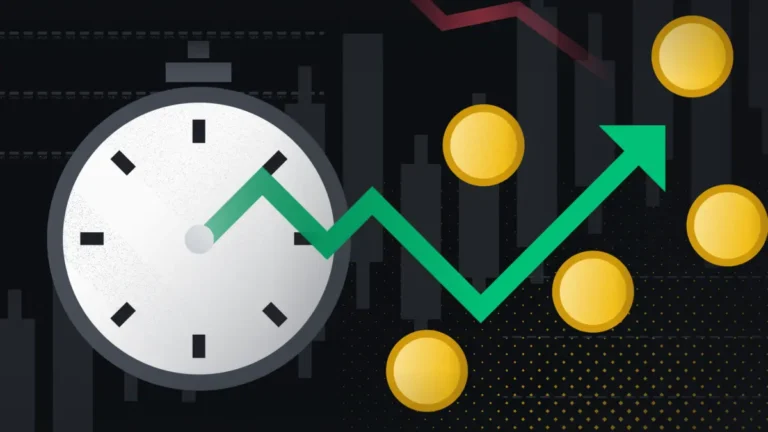How to Use Bitcoin Support and Resistance Levels for Trading
Bitcoin support and resistance levels are key price points where BTC tends to stall or reverse direction.
Because trading isn’t just about following a simple upward or downward trend. The market moves in waves, fluctuating between rallies and dips.
These fluctuations can often seem chaotic, making it difficult for traders to know exactly when to buy, sell, or hold their positions.
However, by learning how to recognize BTC support levels as a warning, and Bitcoin resistance levels as a taking-profit singal, traders can gain more clarity and structure in their decision-making.
Key Takeaways:
ShowSupport and Resistance Levels of Bitcoin

Support and resistance levels are base lines of technical analysis. These levels act as psychological barriers, where market participants react in predictable ways.
Understanding Bitcoin support and resistance levels, but what exactly these zone means?
What Is a Support Level?
BTC support levels represent price points where Bitcoin historically finds buying interest.
When BTC approaches a support level, many traders see it as an opportunity to buy at a discount. This demand halts further price declines.
For instance, if Bitcoin repeatedly bounces off the $31,400 mark, it signals that many investors consider this a fair buying opportunity. Support is established in two primary ways:
- Limit Orders: Traders place buy orders slightly above these levels, creating a buying wall.
- Market Orders: As Bitcoin nears this zone, new buyers aggressively enter, pushing the price back up.
What About Resistance Levels?
Resistance is the flip side of support. It’s the price point where upward movement typically slows or reverses.
This occurs because traders see the price as overextended and begin selling off their positions.
For example, if Bitcoin resistance level at $74,000 hard to break, it suggests strong selling pressure exists at that level. Resistance works similarly to support but in the opposite direction:
- Limit Sell Orders: Traders expect a peak and place sell orders to take profits.
- Market Sell Orders: Momentum traders exit positions when price nears this level, increasing the downward push.
How to Identify Bitcoin Support and Resistance Levels?

Spotting these levels takes more than just guessing or drawing arbitrary lines.
Bitcoin support and resistance levels not just round numbers but zones where collective sentiment often shifts. Most common indicators to use:
- Volume Profile: Shows how much trading occurred at different price levels, revealing zones of interest.
- Fibonacci Tools: These can help identify potential retracement or extension targets.
- Historical Support/Resistance: Price levels that held in the past often play the same role again.
- Psychological Levels: Big round numbers often act as strong psychological barriers.
- Swing Highs and Lows: These help in plotting key reaction zones where price has previously reversed.
Historical Major Bitcoin Support and Resistance Levels
- $20,000: This level acted as major resistance in 2017 and flipped into support in 2020. Breaking it marked the beginning of a massive bull run.
- $30,000 in 2021: Bitcoin tested this level multiple times as support before rallying again.
- $74,000 in 2024: Despite strong catalysts like ETF approvals, Bitcoin failed to break through, emphasizing the importance of confirmation.
Predictions of Bitcoin Resistance Levels for 2025
These projections highlight the need to be flexible and aware of evolving market conditions. Use Bitcoin resistance levels as references, not guarantees.
| Analyst/Firm | Resistance Level | Notes |
|---|---|---|
| Coin Bureau | $93,000 | Breakout could mimic the 2017 rally |
| Technical Analysis | $88,000 | Key zone; breakout may target $108,000 |
| Market Watchers | $100,000 | Clean break could kick off a major uptrend |
| Polymarket | $138,617 | Based on expectations around macro conditions |
| Fundstrat (Tom Lee) | $250,000 | Halving event + institutional entry cited as drivers |
| VanEck | $180,000 | Assumes BTC captures offshore wealth share |
| General Industry Forecast | $200,000 | Predicted on increased institutional inflows |
| BitMEX (Arthur Hayes) | $70,000 | Bearish view in the event of ETF outflows |
| Fibonacci Projections | $91,722 to $103,076 | Based on retracement zones from recent tops |
Trading Strategies Based on Support and Resistance

There are three primary strategies that traders use when applying Bitcoin support and resistance levels:
1. Range Trading
When Bitcoin is moving sideways, oscillating between defined highs and lows, range trading becomes highly effective.
The method is simple: buy near support and sell near Bitcoin resistance levels. However, don’t rush.
Wait for confirmation signals such as candlestick patterns, volume spikes, or momentum indicators before entering trades.
Example: If BTC moves consistently between $15,500 and $18,500, traders might buy at the lower bound and sell at the upper, repeatedly profiting from this channel.
2. Breakout Trading
Breakout trading involves entering the market when the price breaks through a previously established BTC support levels or resistance.
This often signals strong momentum and can lead to explosive moves. A key component of successful breakout trades is volume.
A breakout accompanied by high volume suggests that the price is likely to continue in the direction of the breakout.
Example: When Bitcoin surpassed $20,000 in December 2020 with strong volume, it kicked off a new bull run that took it to $65,000 in just a few months.
3. Pullback Trading
Pullback trading involves entering a trade after a temporary price reversal within a larger trend.
For example, if Bitcoin is in an uptrend and retraces to a former resistance (now acting as support), it can present a low-risk entry point.
Example: In 2021, Bitcoin revisited the $30,000 level several times after breaking above it. These pullbacks provided excellent entry opportunities for traders looking to ride the trend higher.
Tips to Enhance Trading with BTC Support Levels and Resistance

Rather than reacting blindly to market moves, understanding Bitcoin support and resistance levels allows you to anticipate them. Here are things to consider:
Combine Multiple Tools for More Accurate Decisions
Support and resistance are powerful, but they shouldn’t be used in isolation. Combine them with:
- RSI (Relative Strength Index) to measure overbought or oversold conditions.
- MACD (Moving Average Convergence Divergence) for trend strength and direction.
- Bollinger Bands for volatility analysis and confirmation.
Example: If Bitcoin approaches $20,000 and RSI shows overbought conditions while a bearish candlestick forms, the chances of a reversal increase significantly.
Avoiding Common Mistakes
- Misidentifying Levels: Don’t draw lines at minor price moves. Focus on major highs and lows on higher time frames.
- Ignoring Context: Always analyze overall market sentiment and recent news.
- Overreliance: Don’t use Bitcoin support and resistance levels as the only indicator. Blend it with other forms of analysis.
- Not Adapting: Markets change. Reassess your levels regularly based on fresh price action.
Using Stop-Loss Orders for Risk Management
Risk management is crucial in any trading strategy. Stop-loss orders serve as your insurance against unexpected market movements.
- For long positions, place stop-losses just below the support zone.
- For short positions, set them just above the resistance level.
Example: If you’re long from $15,900 with support at $15,500, placing your stop-loss around $15,480 helps limit potential losses.
Online Tools to Trace Bitcoin Support and Resistance Level

Identifying Bitcoin support and resistance levels is crucial for effective trading.
These tools can enhance your ability to identify critical entry and exit point in Bitcoin trading, contributing to more informed and strategic trading decisions.
Several online tools can assist traders in this analysis:
1. TradingView
A widely-used charting platform offering a ‘Support and Resistance’ section.
This tool enables traders to detect major support and resistance levels through automated functions, utilizing historical price data to test trading methods. Users can customize charts with trendlines and Fibonacci retracement tools.
2. Barchart’s BTCUSD Trader’s Cheat Sheet
Provides pivot points and associated support and resistance levels based on end-of-day prices.
These levels are intended for use in the current or next trading session, assisting traders in making informed decisions.
3. Gainium’s Support and Resistance Indicator
A visual tool that identifies key support and resistance levels on price charts based on past price action.
Traders can adjust parameters to make the levels more conservative or aggressive, tailoring the analysis to their trading style.
4. ATAS Support and Resistance Zones Indicator
This indicator identifies Bitcoin support and resistance levels and other assets based on volume analysis across multiple timeframes.
It considers long shadows on candles and allows traders to set up alerts for specific zones.
5. Yingo.ca’s Crypto Support and Resistance App
Offers tools to track and analyze cryptocurrency trends, providing powerful features to identify key support and resistance levels.
The app includes intuitive charting tools and graphical data representations, suitable for both beginners and experienced traders.
Final Words
In conclusion, understanding BTC support levels and resistance zones is a game-changer for anyone looking to trade more strategically and profitably.
These price zones act as critical decision points where market behavior often shifts, offering valuable clues on when to enter or exit a trade.
Whether you’re trading Bitcoin within a range, looking for breakouts, or buying dips, knowing support and resistance levels helps you trade more safely and consistently.
Use tools like TradingView, volume profiles, RSI, and Fibonacci retracements to improve your strategy.
By mastering the concept of Bitcoin support and resistance levels, you’re not just reacting to price, you’re anticipating it.







